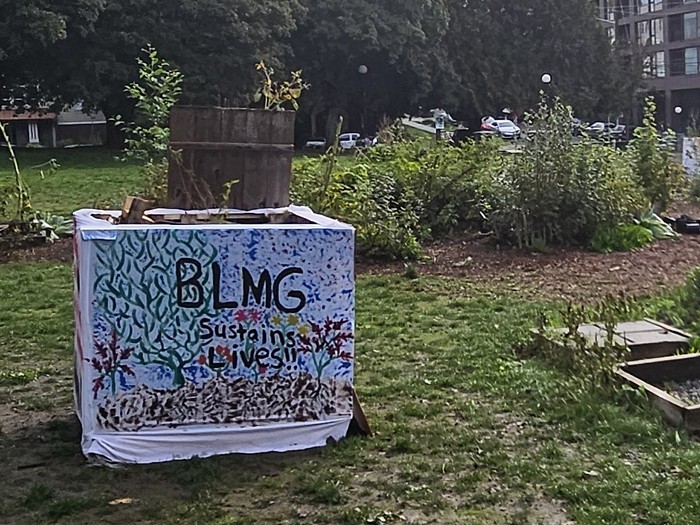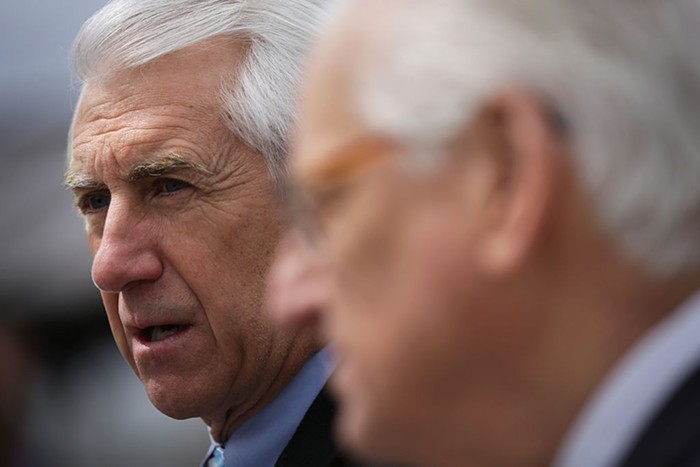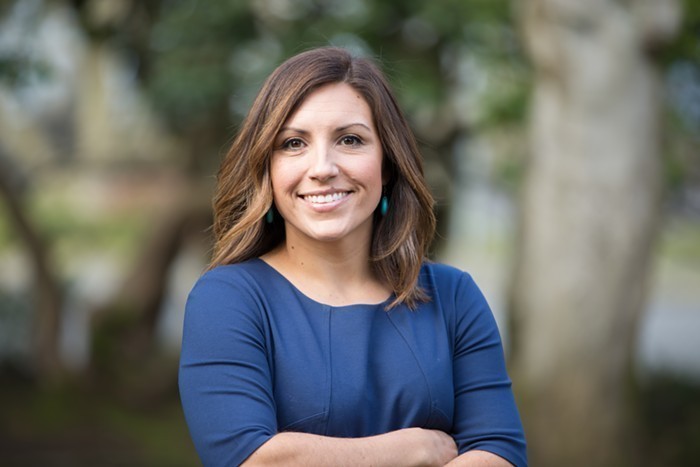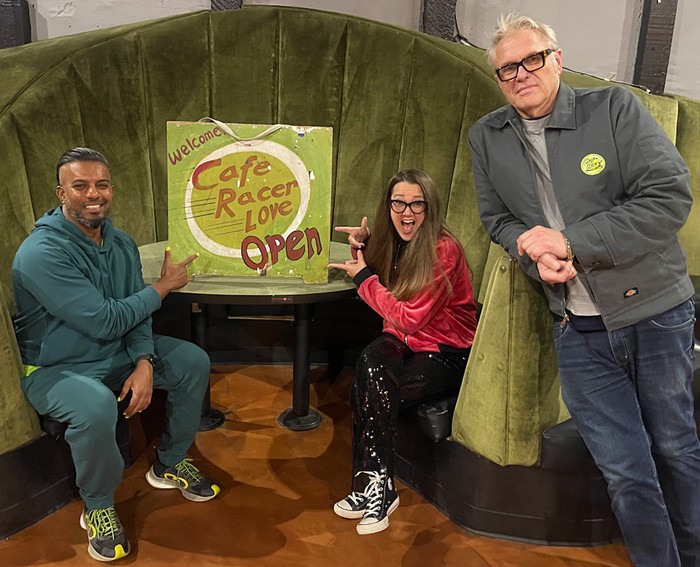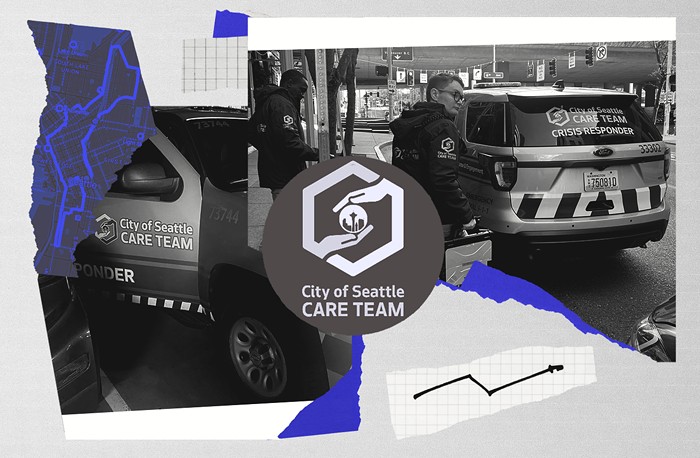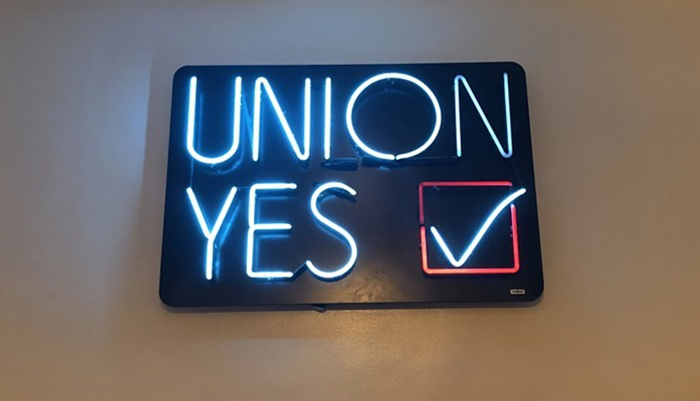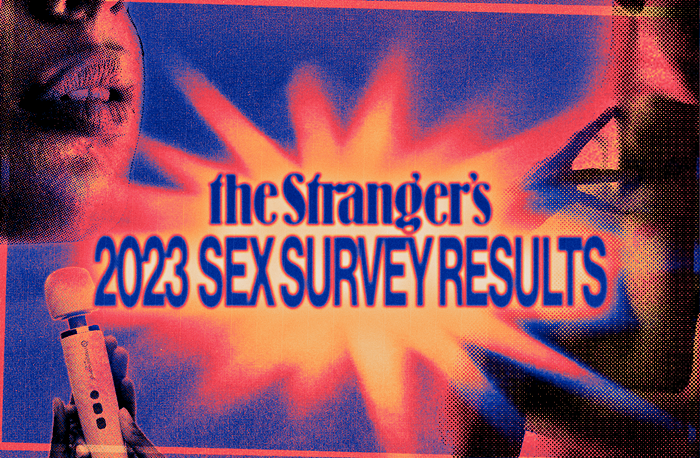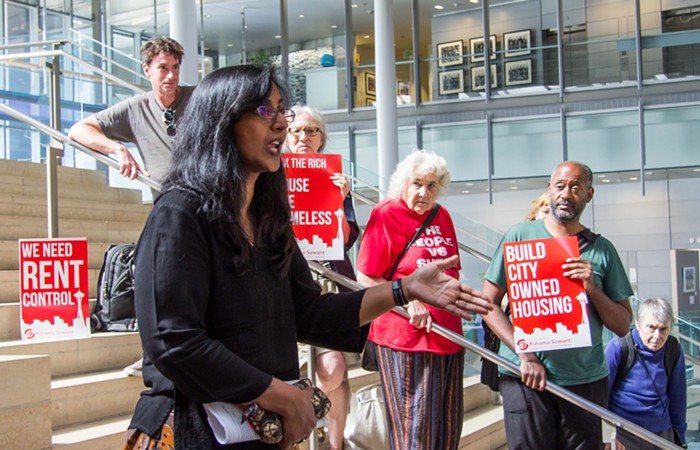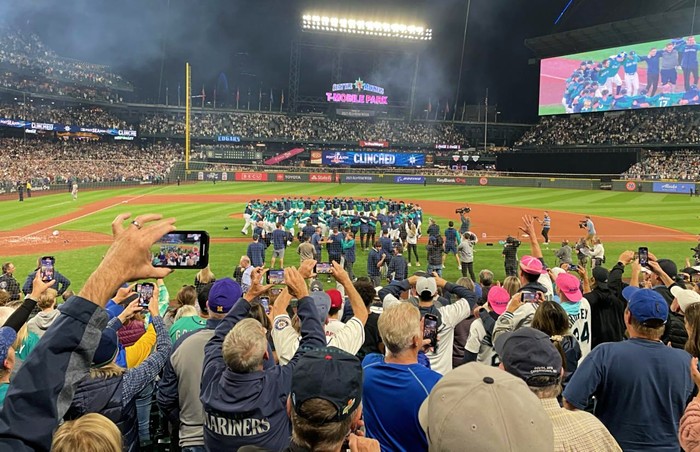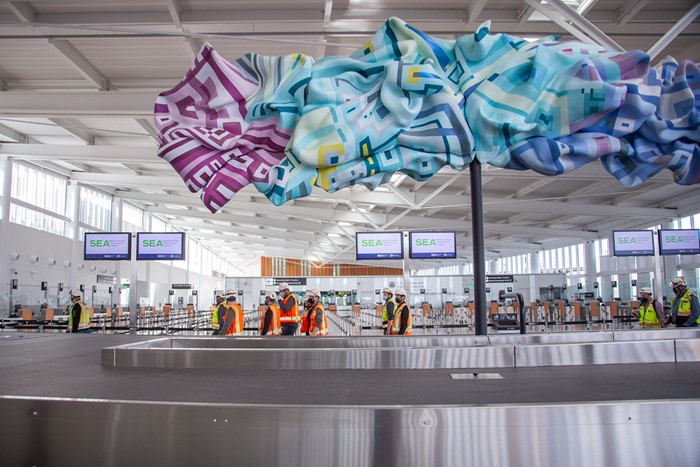Nearly three years later, not a single new railroad tie is in place, and the project is swamped with budget problems and community opposition. Last week, another road block popped up. A group called Neighborhoods First! filed a city-wide initiative that could stall the biggest portion of the project, the light rail line running from the University District to the airport, and add another half billion to the price tag.
The Neighborhoods First! initiative would require that all new passenger rail lines in Seattle be built in underground tunnels. "Think of the impact of a 360-foot train running through your neighborhood," said the group's spokesperson, Carol Washington, at a June 8 press conference in the lobby of city hall. "That's larger than a football field. It's devastating to think about."
The Neighborhoods First! initiative is the latest uprising in the city's south end, complicating an already thorny debate and forcing Seattleites to decide the fate of Rainier Valley.
Neighborhoods First! is an offshoot of Save Our Valley, a group that rose up last October in opposition to what a lot of south-enders saw as blatant disparity in the Seattle rail plan. The original plan called for tunnels from the U District to downtown, and street-level tracks south of downtown. That meant about 300 property takings in the relatively low-income Rainier Valley, as opposed to less than 50 in the more affluent north end.
Those statistics were bolstered by a lingering suspicion that the valley has long been a dumping ground for the city's problems. Throughout the winter, Save Our Valley packed community meetings with hundreds of angry people, and eventually convinced Sound Transit, the agency charged with building the system, to consider a tunnel in the south end.
Unfortunately, a tunnel along Rainier Valley would cost $400 to $500 million; on February 25 the Sound Transit board voted to reject the idea. Save Our Valley has been relatively quiet since, but the struggle in the south end is far from resolved.
The light rail line in the Rainier Valley is slated to run at street level along Martin Luther King, Jr. Way from South McClellan Street to Boeing Access Road. It would run down the middle of the road, with two lanes of car traffic on either side. The trains would be 360 feet long, would have to abide by the 35 mph speed limit along MLK, and would stop at five separate stations.
Neighborhoods First! says the end result would be an unsafe and inefficient transit line that is far from rapid. "We believe that trains should not be running down the middle of Seattle's urban neighborhood streets," says Washington. "We believe that the severe and long-lasting negative effects on our neighborhoods' safety, community, businesses, and environment are far too high a price to pay."
Johnathon Jackson, Sound Transit's community liaison in southeast Seattle, acknowledges that "[Neighborhoods First!'s] questions have merit." But for the most part, he says, "Light rail lines on city streets all over North America have been safe, efficient, and reliable."
Washington and her allies have 180 days to gather 18,830 valid signatures in order to put the issue up to a city-wide vote. To get it on this November's ballot, they'll have to turn in the signatures by around July 15.
The chief organizer behind the initiative is George Curtis, a carpenter who lives in Mount Baker. Curtis is an intense citizen activist known for doggedly fighting to keep cellular antennas out of neighborhoods.
Curtis has taken a similar approach to fighting the rail line in the valley, emphasizing the dangers (10 pedestrians killed by light rail in Portland) while questioning the benefits (only six percent of commuters in Portland travel by light rail). He insists his goal is not to block the rail line, but to make sure it's done right the first time. "I grew up in New York City," he says. "I love the subway. My thing is not to kill transit. I just think it needs to be rethought, re-evaluated, and put on hold for a while."
Neighborhoods First! will have a hard time getting support for the initiative. Traffic congestion is a top concern for most Seattleites, and a lot has changed since Save Our Valley formed last fall. Mayor Paul Schell and County Executive Ron Sims have convinced Sound Transit to invest $50 million into softening the impact of the rail line in the valley. In addition, groups of citizens have been meeting regularly with representatives from the city and Sound Transit, to come up with station area plans that allow displaced businesses to relocate near the new stations.
The city's liaison in the south end, Trang Tu, is fluent in Vietnamese and has been working to convince the many Vietnamese business owners there that rail lines could bring more customers and more opportunity.
Tu has been coordinating meetings at the Filipino Community Center, the scene of some of last winter's most contentious debates. The center is going to be torn down to make way for the rail line, but a new location has been found; the meetings there these days are more wonkish than militant. In the two days after the Neighborhoods First! initiative was filed, four different planning groups got together at the center to discuss ways to make sure the people in the neighborhood benefit from the big changes coming.
It's a typical feel-good Seattle approach, but Curtis is skeptical that it will amount to much. "Inevitably [the city and Sound Transit] will do whatever they want to do," predicts Curtis. "Unless the citizens stand up to them."
